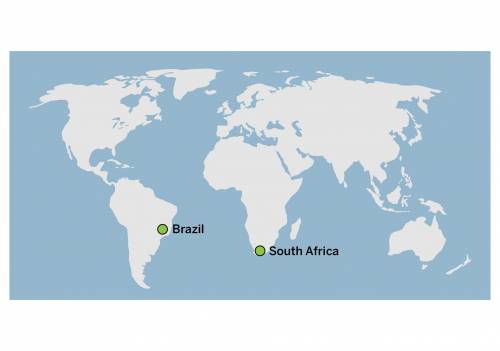
Biology, 30.05.2020 21:00 kkingstone1231
Similar rock formations have been discovered in Brazil and South Africa. These rock formations were formed at the same time and are made of the same types of rocks. What could explain how these rocks got so far apart?
A) Brazil and South Africa are parts of different plates. The plates were sometimes pushed far apart by earthquakes, and soft, solid rock from underneath got added to the edges of the plates.
B) Brazil and South Africa are parts of different plates. The plates floated away from each other across the ocean.
C) Brazil and South Africa are parts of different plates. The plates slowly moved apart as new plates from underneath got added between them over millions of years.
D) Brazil and South Africa are parts of different plates. The plates slowly moved far apart as soft, solid rock from underneath got added to the edges of the plates over millions of years.


Answers: 1


Other questions on the subject: Biology


Biology, 22.06.2019 01:00, khalilah2000ortbfy
Suppose a suitcase has a mass of (m) 30 kg and a net force (n) of 10 kg*m/s. what is the acceleration rate of the suitcasein m/s? show your work to support your answer
Answers: 1


Biology, 22.06.2019 02:50, mccay5016987
Keeping in mind the life cycle of bacteriophages, consider the following problem: during the reproductive cycle of a temperate bacteriophage, the viral dna inserts into the bacterial chromosome where the resultant prophage behaves much like a trojan horse. it can remain quiescent, or it can become lytic and initiate a burst of progeny viruses. several operons maintain the prophage state by interacting with a repressor that keeps the lytic cycle in check. insults (ultraviolet light, for example) to the bacterial cell lead to a partial breakdown of the repressor, which in turn causes the production of enzymes involved in the lytic cycle. as stated in this simple form, would you consider this system of regulation to be operating under positive or negative control?
Answers: 1
You know the right answer?
Similar rock formations have been discovered in Brazil and South Africa. These rock formations were...
Questions in other subjects:

Mathematics, 01.07.2020 15:01

Mathematics, 01.07.2020 15:01

Mathematics, 01.07.2020 15:01

Mathematics, 01.07.2020 15:01


Mathematics, 01.07.2020 15:01



Mathematics, 01.07.2020 15:01




